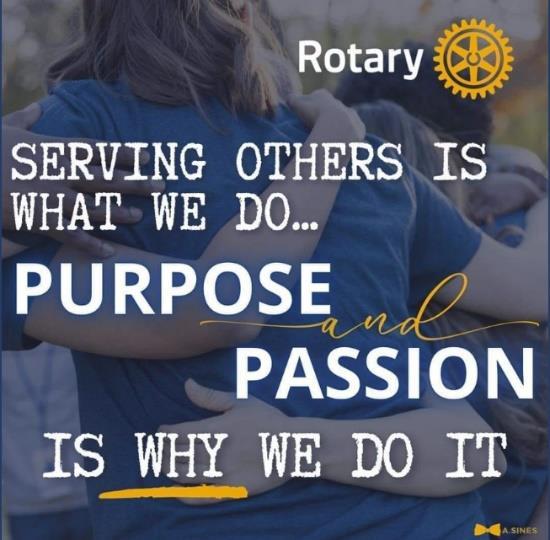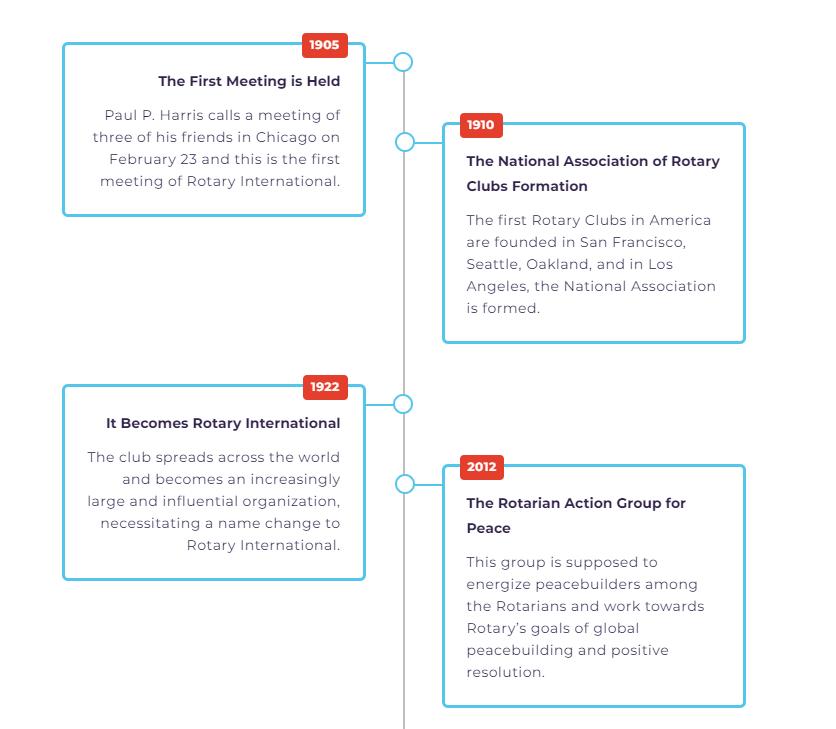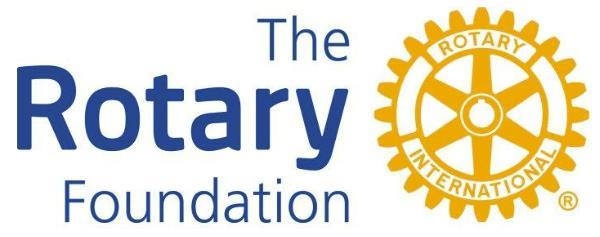
3 minute read
The Beginnings of Rotary from last month
Minority Membership
Rotary formally considered the issue of racial restriction in membership and determined that the organization could not allow racial restrictions to the organization’s growth. In Rotary’s legislative deliberations in June 1921, it was formally determined that racial restrictions would not be permitted. Non-racialism was included in the terms of the standard constitution in 1922, required to be adopted by all member clubs.
Advertisement
Rotary and other service clubs in the last decade became open to homosexual membership. Other minorities, in the face of general changes in demographics are also encouraged to join.
Tolerance of Differences
Tolerance is one of the most important virtues in the Rotary spirit. As early as 1911, our founder Paul Harris in his essay Rational Rotarianism said, “If by interposition of Providence I someday were to find myself standing on a platform in some great Coliseum looking into the eyes of every living Rotarian, and were to be told that I could have one word to say, without an instant’s hesitation and at the top of my voice, “ would shout “Toleration!”
Our founder, Paul Harris, has repeatedly iterated: “Rotarians respect each other’s opinions and are tolerant and friendly at all times. Catholics, Protestants, Muslims, Jews, and Buddhists break bread together in Rotary.” And it is this tolerant attitude that prompted the Rotary International to adopt the following statement in 1933: “Rotarians in all countries should recognize these facts (differences), and there should be a thoughtful avoidance of criticism of the laws and customs of one country by the Rotarians of another country.” Tolerance is a key to understanding among different peoples and nations.
Catholicism and Rotary
The problem seems to have started in Spain in 1928 when a bishop laid charges that Rotary was nothing but a new Satanic organization. The church also criticized and condemned Rotary for showing a concept of life of service without reference to church teaching. Indeed, it seems that the church believed it was a secret society with quasi-religious overtones. For whatever reason, the Vatican took up the reins and in 1929 it issued a decree that “it is not expedient” for Catholic priests to participate in Rotary either as member or guests. This decree and its application were worrisome to many Catholics in Rotary, not the least of which was then RI President Tom Sutton who was himself a Catholic.
Critical and at times disparaging articles regularly appeared in Catholic newspapers. Sutton’s attempts to convince the Secretary of State at the Vatican were fruitless and the anti-Rotary articles continued to be published.
The factual errors were shown to be false and by 1933 there was a mood swing in the Vatican. Priests were now allowed to use their discretion about attending or even joining Rotary. Nevertheless, one of the results of the church attitude was a slow development of Rotary in predominantly Catholic countries such as Ireland.
The uneasy peace continued until 1951 when yet another Vatican decree warned Priests that they should not join Rotary and that the faithful should be aware of seditious and suspected organizations.
But the world was changing, and the decree caused an immediate angry response among others, from the thenCatholic and RI President Arthur Laqueux, and even from the Rotarian, Catholic Bishop of Fort Wayne, Indiana, who publicly declared the decree “quite incomprehensible.”
Fairly son, the Vatican began to react and by the end of the decade, the Catholic Truth Society was able to declare that Rotary is neither secret nor seditious. Gradually, there was a thaw in the relationship between the church and Rotary. In 1970, Pope Pius VI addressed Rotarians in Italy and in 1979, Pope John Paul II spoke at the Rotary International convention in Rome praising many of Rotary’s humanitarian programs. Later, Pope John Paul II accepted a Paul Harris Fellowship and a World Understanding and Peace award from Rotary.
Finally, before becoming Pope Francis, then Cardinal Jorge Bergoglio accepted an honorary membership in the Rotary Club of Buenos Aires.
Some Rotary Firsts
• The first Rotary club meeting was in Chicago, Illinois, on February 23, 1905.
• The first regular luncheon meetings were in Oakland, California, chartered in 1909.
• The first Rotary convention was in Chicago in 1910.
• The first Rotary club outside of the U.S was chartered in Winnipeg, Manitoba, Canada, in 1910.
• The first Rotary club in South America waws chartered in Montevideo, Uruguay, in 1918.
• The first Rotary club in Asia was chartered in Manila, Philippines, in 1919.
• The first Rotary club in Africa was chartered in Johannesburg, South Africa, in 1921.
• The first Rotary club in Australia was chartered in Melbourne in 1921
• The first Rotary club in Northern California was chartered in Eureka in 1923.
Source: https://rotary1.org/101-things-about-rotary/
World Understanding and Peace Day – February 23
World Understanding and Peace Day takes place on February 23 every year. In 2023, Rotary turns 118!
This day is actually a commemoration of the first meeting of Rotary that was held. This meeting of businessmen, which aimed to be a space where their backgrounds didn’t matter, started the chain of events that led to the formation of Rotary International.

An international organization dedicated to humanitarian service as well as peace and goodwill throughout the world, Rotary International began in Chicago, U.S. The date of the first meeting has since become World Understanding and Peace Day, which is part of the World Understanding Month celebrations in February.











